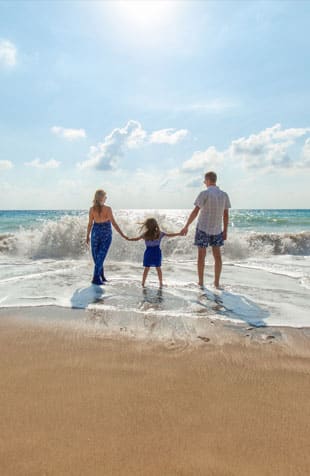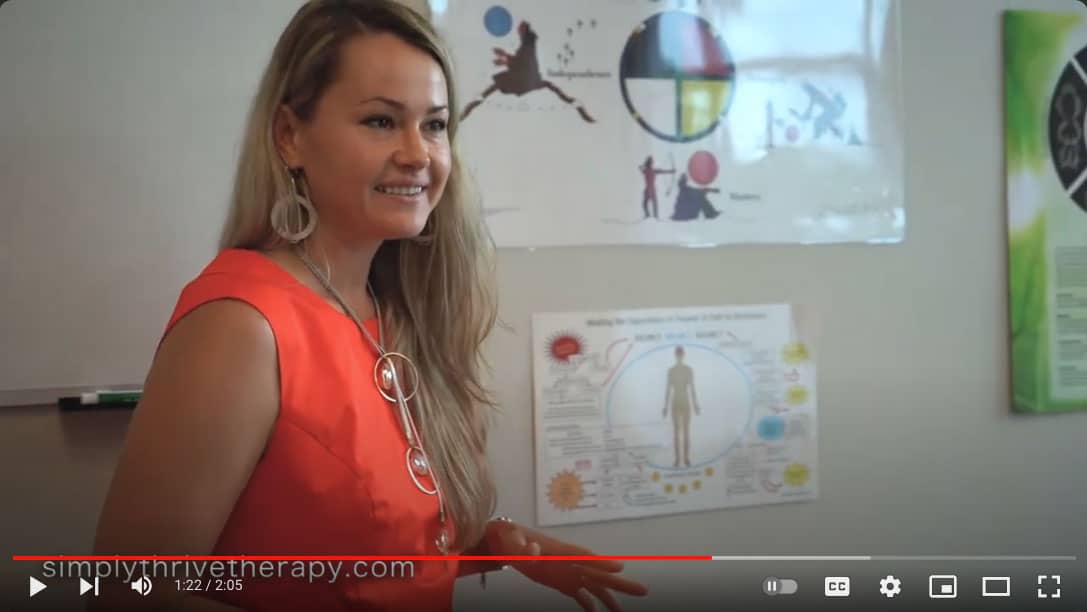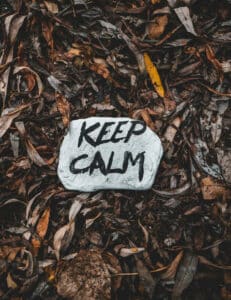Our Teen IOP Story
Our Journey Begins: An Already Thriving Practice
Our sister company, Simply Thrive Therapeutic Associates, was in the process of hiring more mental health and support staff. I noticed in our family therapy sessions that we had a lot of teen clients who were struggling with mental health issues (anxiety disorders, suicidal ideations, and other mental illness diagnoses).
Being that I LOVE working with teens I was taking notice I had quite a few teens who were in need of a higher level of care a few days a week for their anxiety disorders and other mental health concerns. A conventional teen outpatient (OP) program wasn’t enough to ensure their well being but they were not at the point in their mental illness treatment where they needed hospitalization yet.
When I say yet, it was to say that they were close and we wanted to, through behavioral therapy and other means of developing coping skills, prevent them from needing to go. Having to stay at a hospital can be very scary, even traumatizing to anyone, let alone a teen in distress and can exacerbate challenges like self harm, suicidal thoughts, substance abuse, and many others.
So, I see we have space in the office, we have a need and I start doing research to see how I can support our community with these mental health resources. Then the pandemic hit. We all got sent home and I had childcare only to see my clients and a few hours after my kids went to sleep. In this time, I became a certified trauma and resilience practitioner (CTRP-C) and immersed myself in the curriculum.
Becoming a Certified Trauma and Resilience Practitioner (CTRP-C): It Changed The Way I Do Therapy
What I had been doing as a mental health clinician was working on the person’s thinking. Get them into therapy, out of crisis (self harm, suicidal ideations, etc), and working on thinking errors. What many therapists are missing is that there is a key step that comes before that, CALM DOWN THE NERVOUS SYSTEM. My mind was blown and my style was forever changed. At the same time, I had a colleague introduce me to the Safe and Sound Protocol (SSP).
Stephen Porges, the founder of PolyVagal theory (the theory that we need to calm down the nervous system before we do any cognitive work). The idea is to use the vibrations from music that they have modulated to realign the nervous system. It is a game changer.

Intensive Outpatient Program (IOP): The Need For State Licensure
With these two systems, I was excited and eager to get our program going. As I had stated in the about me page, I thought I would casually start an IOP (intensive Outpatient Program). (cue laughter). Any program in the state of NC who offers more than 9 hours of therapy a week (cumulatively) is required by state law to have state licensure. Sharon, our director of operations with Simply Thrive, and I spent a year finding a building that met criteria (2 exits, fire proof walls, sprinklers, enough space per person in the group therapy room and a lot more) and created a 130 page policy and procedure manual, hired staff and finally in June 2021 we were officially state approved to operate our intensive outpatient program.

June 2021: Teen Outpatient Program Grand Opening!
Our first set of mental health clients went through the teen outpatient program in June of 2021 with a great level of success. We had very positive feedback. Since then we have had more groups with successful stories exit our outpatient therapy program.
Our curriculum includes groups about polyvagal theory and calming the system, Dialectical Behavior Therapy skills, expressive arts, movement groups, and more!
Mid 2022: Insurance Updates! (Welcome Aetna)
We are now accepting clients for individual and family in network with Aetna. We also are out of network participating providers for Tricare. We have to complete CARF to go into the network with any other provider and for our intensive outpatient program, or IOP/DT (read on below).
Our plan is to get pay agreements for all other companies to ensure they are reimbursing us well enough to keep our doors open before going into the network. We want these vital services to be accessible to all in our community, and we need to be able to keep our program running at our standards, state’s standards, and CARF’s standards.
2022: Growing to meet community needs and eliminate barriers!
Our clinicians brought to my attention that we had people calling in who’s teens could use our support but didn’t need 3 hour/3 day a week group therapy. They may benefit from more than individual outpatient therapy but not be in need of 9 hours or more a week. We decided to add psycho-education groups and individual sessions to support those calling in.
In some situations we also had clients who weren’t quite ready for an intensive outpatient program but did well with seeing our intensive outpatient program therapists for individuals so if they needed to set up care, they already had a relationship with them. So far, both of these have been very successful in eliminating barriers to taking part in our intensive outpatient treatment program.
AND FINALLY CARF (COMMISSION ON ACCREDITATION OF REHABILITATION FACILITIES)…..
We have spent the last year getting prepared so we can apply for CARF accreditation. August 2022 we had our CARF surveyor come out to assess us for accreditation with their program. The reason we need CARF is to accept most insurances, and it holds us to the highest standards. Our 130 page Policies and Procedures is now a 500 page document.
A Lot of Lessons: What We Have Learned So Far–
- Therapy is expensive and billing an intensive outpatient program and Day Treatment is challenging
–we get that this program costs a lot of money AND billing an intensive outpatient program is the hardest part of our entire job AND we want to support you in getting paid. - Mental Health therapy works best when the family is involved
- There are no set of hours or days a week with which every family is happy


Pivoting As We Go: Changes Created By What We Learned
- The families who tell us that they got the most out of the teen intensive outpatient program participated in family therapy sessions. Kids don’t struggle in a vacuum. They need support groups to help develop and maintain effective coping skills, problem solving skills, and daily routines. The family system needs to be set up to support them and be supported themselves.
- We have tried our best to accommodate teens and their family members to the best of our ability within the intensive outpatient program framework. 3:15-6:15 seem to be the best hours to do this. If your teen needs this higher level of support, participating in sports or band may need to take a backseat for their length of stay. We are trying to add in a 4:30-7:30 3 day a week virtual intensive outpatient program to support those whose mental health concerns are less severe (can participate from home) and in the afterschool well being programs, as well as those in areas that may not have access to in person groups.
The Future Looks Bright: Hope Is The Word We As A Team Feel About This Program
- Hope that we can help your teen to radically improve their overall mental health.
- Hope to work with the community to decrease teen mental health stigma and raise awareness to promote asking for mental health help when needed so teens don’t reach suicidality (idea, plans, or actions) before someone can step in
- Hope we can eliminate the barriers for families needing mental health support
- Hope for the the present and the future of providing mental health in the community
Thank you for taking the time to read our story, and learn more about our intensive outpatient program services (art therapy, dialectical behavioral therapy, etc)




